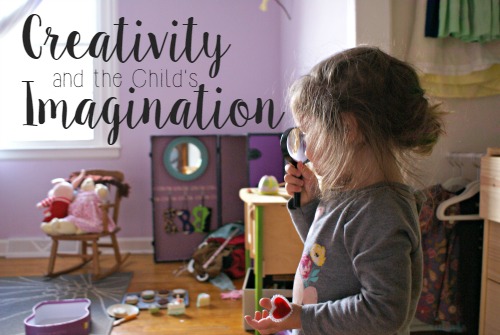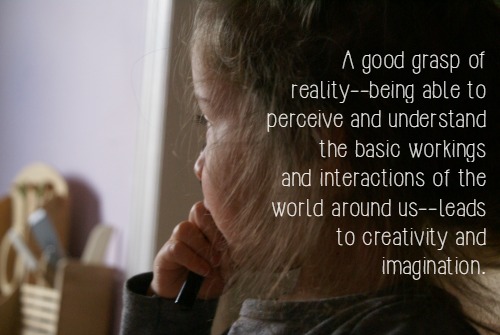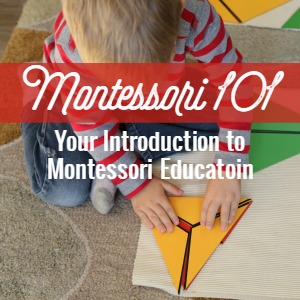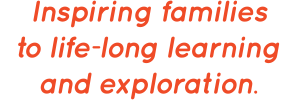 Montessori tends to get a bad rapt when it comes to creativity and imagination. People tend to to think that Montessori did not like the creative arts or for children to play pretend. This is an incorrect assumption.
Montessori tends to get a bad rapt when it comes to creativity and imagination. People tend to to think that Montessori did not like the creative arts or for children to play pretend. This is an incorrect assumption.
The child’s imagination and creativity is built through interactions with the environment. It seems to always come back to the environment, doesn’t it?
Montessori emphasized reality for the young child, because their understanding of their environment and the world is still being developed. She saw this environment as beautiful, harmonious, and based in reality, so that the child can “organize his perceptions of it.”
Why reality before creativity?
When the child “has developed realistic and ordered perceptions of the life about him, the child is capable of the selecting and emphasizing processes necessary for creative endeavors” (45).
A good grasp of reality–being able to perceive and understand the basic workings and interactions of the world around us—leads to creativity and imagination.
“Montessori emphasized that this selective capability requires three qualities: a remarkable power of attention and concentration which appear almost as a form of meditation; a considerable autonomy and independence of judgment; and an expectant faith that remains open to truth and reality.”
Paula Polk Lillard, Montessori: A Modern Approach, 45
 We tend to think of the child’s creation of fantasies and tales as proof of their great imaginations. However, Montessori believed this wasn’t the child’s full imaginative and creative potential, but a sign of his dependent and powerless position in life. Even the belief in adult created myths and traditions, like Santa Claus, Montessori saw as more due to the child’s openness to believe rather than their own creativity.
We tend to think of the child’s creation of fantasies and tales as proof of their great imaginations. However, Montessori believed this wasn’t the child’s full imaginative and creative potential, but a sign of his dependent and powerless position in life. Even the belief in adult created myths and traditions, like Santa Claus, Montessori saw as more due to the child’s openness to believe rather than their own creativity.
In short, they are swayed and influenced by the adult, rather than being their own creators. Lillard says it this way, “The adult substitutes his imagination for the child’s because he continually sees the child as a passive being for whom he must act” (45).
Montessori believed when children heard fairy tales and such they were not encouraging the child’s imagination, or creating creativity, but that the child “is only receiving impressions. He is not developing his own powers to imagine constructively” (The Absorbent Mind, 254-255).
So what does this mean? Do we leave behind the imaginative, the great stories of the past? What of Narnia and Middle Earth? Paul Bunyan and Babe the Blue Ox?
It wasn’t that Montessori didn’t like creativity or imagination (stories and such) as much as she didn’t care for how it left the child as a passive receiver rather than an active participant or creator. It’s important to note that she shared fairy tales with her children and saw them as a valuable part of life, but after the basis for reality was laid.
Montessori saw the environment—beauty, order, and reality—as essential, but also that the child needs freedom to develop creativity. The child needs,
“freedom to select what attracts him in his environment, to relate to it without interruption and for as long as he likes, to discover solutions and ideas and select his answer on his own, and to communicate and share his discoveries at will.” (46)
Do you want a creative and imaginative child? Let the child be free and create an environment that supports, enables, and propels the child to greater freedom. When the child is able to move freely about the environment, choose and be absorbed in purposeful work, meet challenges and find solutions, and to do this independently, then you have a child who is ready and capable to be an active participant, rather than a passive receiver, of his own creativity and imagination.
Lillard also points out that without the adult authority to pronounce good/bad or right/wrong, the child owns their creative responses and impulses. They are not easily swayed by an outside source. The child becomes the evaluator, no longer looking for the approval of an adult or peer to say whether their drawing it right and good, their fort truly looks like a castle, or whether an astronaut could really fly to Mars. The child has the skills to be their own independent, confident, creative being.
So really, rooting a child in reality (and all that follows and includes) leads to a more confident, creative, able, and imaginative human being.
All work is cloaked in the power of creation. And that’s one thing we need to realize. To be creative isn’t to only paint, or write, tell stories or act out dramas. To be creative is to engage in real, meaningful, and beautiful activity for the benefit of ourselves and others. Sometimes that takes the look of a beautiful painting and sometimes it takes the look of pouring water in a glass to share with a friend. Both activities are an act of creation needing first the foundation of freedom, opportunity for work, self-discipline, and a prepared environment.
This post is part of a series called Montessori 101. In February, we looked at Montessori’s approach to the child. In March, we’ll dive into the prepared environment and what that means.
Don’t miss a post in the series by signing up for the Our Montessori Home Newsletter!































2 comments… add one
Loved your article!
Interesting. Gives me an understanding on imagination n creativity.
Thanks.